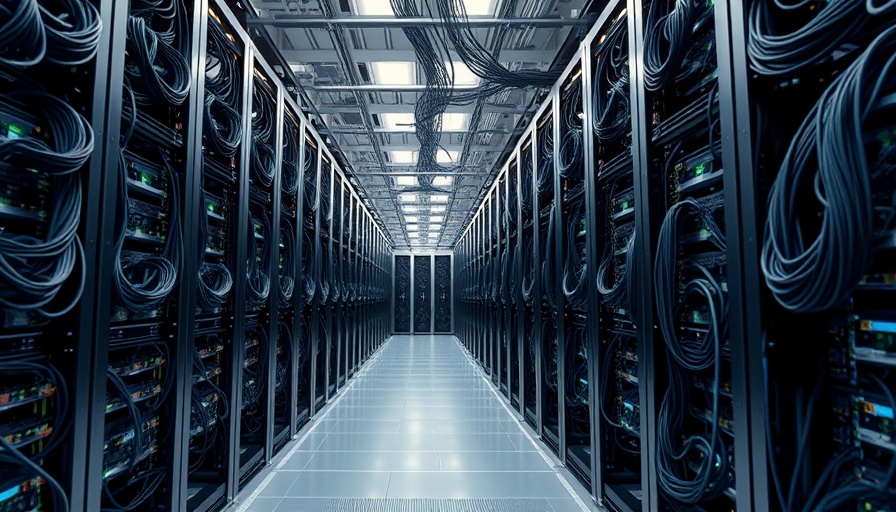
China's Innovative Approach to Data Center Efficiency
In a remarkable new strategy, China is embarking on a nationwide initiative to improve the viability of data centers by redistributing surplus computing power. Many of these centers, built amid a boom in infrastructure development, now face alarming underutilization rates, serving at only 20% to 30% capacity—a stark reminder of how quickly the tech landscape shifts. As a result, the Chinese government, spurred by its Ministry of Industry and Information Technology (MIIT), is uniting resources across regions to optimize this valuable asset.
Transforming Waste into Resource: The Cloud Rescue Plan
The plan is ambitious: pooling the excess CPU power from these underused data centers and creating a unified cloud service. Essentially, this means that CPU resources from centers that aren’t maximizing their potential can be utilized elsewhere, distributing power where it is needed most. As reported by Chen Yili of the China Academy of Information and Communications Technology, the national goal is to ensure a standardized interconnection of public computing resources by 2028. This cloud initiative mirrors ambitious economic strategies, similar to how China initially sought to enhance its EV market.
The Economic Implications of Underutilization
This innovative approach is not merely a tech upgrade but a financial necessity. Idle data centers remain a financial burden, as hardware incurs costs even when sitting dormant. For young homeowners in London, this directly correlates with your growing interest in sustainable living and home tech management. Optimizing resources, be it in a distant data center or within your smart home, is about maximizing what you have to create a more efficient operation. Imagine if your home tech could seamlessly communicate like China's new data cloud; such upgrades would not only save energy but reduce costs in the long term.
Future Predictions: Cloud Services in a Smart Home Landscape
As we gaze into the future, the potential for integrated smart homes could leap forward, paralleling China’s cloud innovations. With the ability to utilize surplus data processing power, homeowners may someday connect their smart systems to leverage greater computing power whenever required. This not only enhances efficiency but can make your home more adaptive and responsive to your needs. Whether it’s controlling your smart thermostat or managing energy consumption, the interconnectedness driven by these advances can redefine our living spaces.
Learning from Global Trends: What Can Local Homeowners Take Away?
For London homeowners keen on integrating technology into everyday life, China's cloud power redistribution model offers lessons. Embracing smart and connected homes not only elevates our living experience but may lead to more considerable efficiencies. Imagine reducing your carbon footprint while simplifying your daily chores just as China aims to achieve energy efficiency in its sprawling data landscape. The transition to smart technologies resonates deeply with the values of sustainability you prioritize.
The Role of Community in Tech Advancement
Ultimately, this wave of change invites local engagement. Grassroots initiatives like neighborhood tech fairs or workshops on smart home technologies can empower young homeowners to embrace the trends reshaping our lives—much like the communal efforts seen in urban China. The success of collective approaches fosters innovation, allowing individuals to reap the benefits of progress while nurturing community bonds.
If you're inspired by the potential transformations in tech and how they can enhance your home, consider exploring smart home technologies that align with sustainability. Start small—perhaps with energy-efficient devices or smart thermostats. Engage with local tech enthusiasts, attend workshops, and share your journey toward a connected, efficient home.
 Add Row
Add Row  Add
Add 




Write A Comment